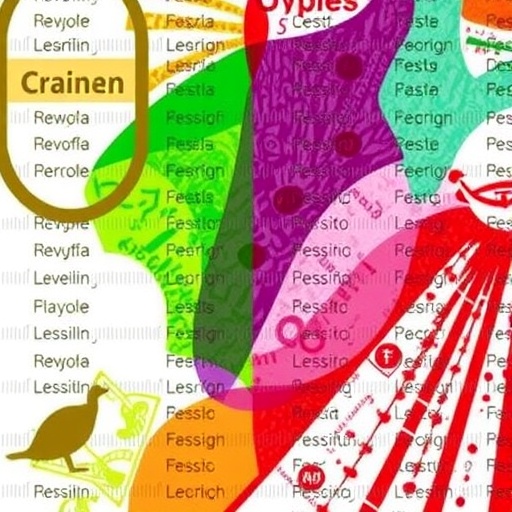In a groundbreaking study published in BMC Genomics, researchers have unveiled significant insights into the paternal genetic diversity and regional substructure of the Spanish Roma population. With a focus on their genetic lineage, researchers Ena, G.F., Giménez, A., and Carballo-Mesa, A. delve into the complex web of demographics that shape the identity of this historically marginalized group. The findings not only shed light on genetic variations among the Roma but also present a rich tapestry of regional differences, all of which are crucial for understanding their cultural and historical narratives.
The study rigorously investigates the paternal lineages within the Spanish Roma using advanced genomic analysis techniques. Employing high-resolution Y-chromosome data, the researchers were able to identify unique genetic markers that trace lineage paths through generations. This approach allows for a detailed examination of the male-specific lineage and provides a window into the migration patterns of this community. By focusing on the paternal genetic diversity, the study reveals the intricate connections between social structure and genetic heritage within the Roma.
As the researchers embarked on their journey through the complexities of Roma genetics, they acknowledged the historical mistreatment of this population, which has led to a plethora of social misconceptions. The genetic evidence gathered illustrates a diverse ancestry, with roots tracing back to multiple sources over centuries of migration across Europe. Each genetic marker is a narrative of survival and adaptation, showcasing how the Roma have managed to retain their identity amid changing landscapes.
A notable finding from the research was the regional substructure within the paternal genetic data. The analysis highlighted distinct genetic clusters among the Spanish Roma, suggesting that geographical location played an influential role in shaping genetic diversity. By uncovering these regional differences, the study not only enhances the understanding of genetic variation but also contextualizes cultural practices unique to each sub-group within the Roma community.
The implications of this research extend beyond mere academic interest; they hold profound social relevance. The understanding of genetic diversity among the Roma can aid in dispelling myths and stereotypes commonly associated with them. By illustrating the rich genetic tapestry of the Roma, the study provides a counter-narrative to the stigmatization that often accompanies discussions of their identity. This work champions the cause of cultural recognition and respects the diverse backgrounds that exist within the Roma people.
Moreover, the methodologies employed in this research set a precedent for future genomic studies within other marginalized populations. By focusing on Y-chromosome analysis, it paves the way for similar investigations that can unveil the historical narratives of various groups around the globe. The researchers’ approach serves as a model for ethical genetic research, demonstrating how genomic data can be leveraged to foster understanding while respecting the community being studied.
The study also raises critical ethical considerations about the use of genetic data in understanding social groups. As genetic research continues to evolve, it is imperative to approach such studies with sensitivity to the social implications that accompany them. By framing the findings in a manner that acknowledges the historical context and contemporary relevance, the research emphasizes the potential for genetics to bridge the gap between scientific inquiry and social justice.
One of the more fascinating aspects of the study is its exploration of how historical migrations have influenced current genetic diversity. The Roma, having traveled from northern India to Europe, have shaped and been shaped by various cultures along their journey. These migrations are not merely historic footnotes but are instrumental in understanding current identity formations. As genetic patterns reveal layers of ancestry, they also narrate the resilience and adaptation of the Roma.
Furthermore, the range of genetic diversity identified within the study highlights the influence of environmental factors on genetic drift. The researchers suggest that localized adaptations may have been in response to varying environments experienced throughout the migration pathways. This concept of biocultural adaptation provides a rich framework for understanding how external factors such as climate and societal interactions have sculpted the genetic landscape observed today.
As the findings from this research reverberate through both academic circles and the wider public sphere, it is critical to recognize the power of knowledge in effecting change. Education about genetic diversity and the complex history of the Roma can foster empathy and understanding, urging society to move past stereotypes and embrace a more nuanced view of cultural identities. This study acts as a clarion call for a reevaluation of how genetic studies are framed in public discourse.
In conclusion, the study published in BMC Genomics stands as a testament to the intersection of genetics and social identity. Through its exploration of paternal genetic diversity and regional substructure in the Spanish Roma, it serves as both a scientific achievement and a social imperative. With its ethical considerations and reflective approach to historical context, this research not only enhances our understanding of the Roma but also champions the potential of genetic studies to inform and transform cultural narratives for marginalized communities.
As we continue to delve into the vast possibilities of genomic research, it is imperative that studies like this pave the way for a more inclusive and empathetic understanding of our collective pasts and shared futures. The intricate mosaic of genetics that this research reveals is not just an academic endeavor, but a vital piece of the larger puzzle of human history and identity.
Subject of Research: Paternal genetic diversity and regional substructure in the Spanish Roma population.
Article Title: Demographic insights into paternal genetic diversity and regional substructure in the Spanish Roma.
Article References:
Ena, G.F., Giménez, A., Carballo-Mesa, A. et al. Demographic insights into paternal genetic diversity and regional substructure in the Spanish Roma.
BMC Genomics 26, 1012 (2025). https://doi.org/10.1186/s12864-025-12210-8
Image Credits: AI Generated
DOI: https://doi.org/10.1186/s12864-025-12210-8
Keywords: paternal genetic diversity, Spanish Roma, genomic analysis, regional substructure, migration patterns, cultural identity, ethical considerations.




